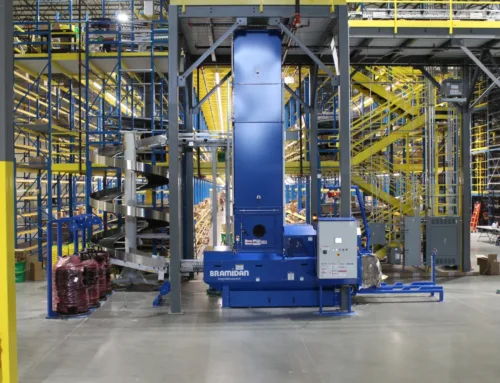
When facing financial distress, many business owners must decide between liquidation and bankruptcy. This choice can significantly impact the future of the company. In this post, you will learn the differences between the liquidation process and bankruptcy, evaluate the reasons for choosing each option, and analyze their pros and cons. By engaging with this content, you will gain valuable insights into making informed decisions during business insolvency, helping to recover assets effectively through tailored commercial liquidation services. Addressing these options can alleviate the uncertainty you may feel about your business’s future.
Defining Liquidation and Bankruptcy for Businesses

Understanding the concepts of liquidation and bankruptcy is essential for any business facing financial distress. Liquidation involves the selling of assets through commercial liquidation services to pay creditors, while bankruptcy is a legal process aimed at restructuring debt with customized solutions to facilitate recovery. You will explore the legal procedures associated with each option, the key distinctions between them, and the implications for business owners in terms of risk management during a recession.
Clarifying the Concepts of Liquidation and Bankruptcy
Liquidation and bankruptcy are critical concepts for any corporation or partnership facing financial challenges. Liquidation refers to the process of selling a business’s assets to satisfy its creditors, often resulting in the closure of operations. Businesses may seek commercial liquidation services to effectively manage this process. In contrast, bankruptcy offers a legal path to restructure debts through customized solutions, allowing a business to negotiate new terms and continue trading under the oversight of the United States Department of Justice. For more resources, visit the end2end logix homepage.
- Liquidation involves selling assets.
- Bankruptcy provides a chance for debt restructuring.
- Certain protections may apply under bankruptcy law.
- Both processes affect creditors differently.
The Legal Processes Involved in Each Option
The legal processes associated with liquidation and bankruptcy can significantly impact your business’s cash flow and future operations. In the case of liquidation, an insolvency practitioner will oversee the sale of assets to pay creditors, marking the end of your business operations. On the other hand, pursuing bankruptcy involves negotiating with creditors while following specific legal protocols to restructure debts, providing you an opportunity to regain financial stability under the guidance of the law.
Key Differences Between Liquidation and Bankruptcy
When assessing the differences between liquidation and bankruptcy, it’s vital to understand how each option affects your business’s financial standing. Liquidation focuses on converting your company’s assets into cash to settle outstanding debts, often leading to the permanent closure of the business. In contrast, bankruptcy emphasizes restructuring your debts to regain operational capabilities, allowing you to manage your financial challenges while continuing to operate:
- Liquidation involves the sale of assets to pay creditors.
- Bankruptcy allows for negotiation and restructuring of debts.
- Liquidation generally results in the end of business operations.
- Bankruptcy can provide a fresh start for your business.
The Implications for Business Owners
As a business owner, you must understand the implications of choosing between liquidation and bankruptcy. When engaging a liquidator, you face the reality that your assets may be sold off, affecting your credit rating and future options for financing. On the other hand, a bankruptcy situation may allow you to establish a repayment plan, providing a pathway to manage your credit and negotiate with creditors, giving your business a chance at recovery rather than definitive closure.
Liquidation and bankruptcy are paths many businesses face. Understanding why one might choose these routes reveals their underlying struggles and the decisions that follow.
Evaluating the Reasons for Choosing Liquidation or Bankruptcy

Identifying indicators of financial distress is crucial for small businesses facing difficulties. You need to assess how filing for bankruptcy or proceeding with liquidation could impact your cash flow and future opportunities. Additionally, weighing the long-term consequences of business shutdown versus potential debt restructuring is essential to make an informed decision that minimizes liability.
Identifying Financial Distress Indicators
Recognizing financial distress indicators is vital for making informed decisions about your business’s future, particularly when weighing liquidation versus bankruptcy. Key indicators include consistently declining revenue, which may signal underlying issues impacting your business’s ability to operate as a going concern. Additionally, if you find yourself incurring fees associated with missed payments or facing increasing debts that outweigh your assets, it may be time to evaluate whether liquidation is necessary or if pursuing bankruptcy offers a more structured solution.
Assessing the Impact on Credit and Future Opportunities
When considering liquidation or bankruptcy, the impact on your credit rating and future opportunities is significant. If you proceed with liquidation, it will likely lead to a dramatic decline in your credit score, limiting your access to financing for personal insolvency. In contrast, filing for bankruptcy may allow you to negotiate terms with your creditors under the guidance of a trustee, which can help improve your credit rating over time and open avenues for rebuilding your financial future.
- Understanding the impact on your credit score is crucial.
- Liquidation may severely limit future financing options.
- Bankruptcy allows for negotiation of unsecured debt.
- Working with a trustee can facilitate your recovery.
Weighing the Long-Term Consequences: Business Shutdown vs. Restructuring
When considering the long-term consequences of business shutdown versus restructuring, it’s vital to assess how each path aligns with your future goals. If you choose liquidation, you may instantly eliminate ongoing debts, but this decision often leads to the permanent closure of your business and loss of potential future income. Conversely, pursuing bankruptcy allows for debt restructuring, which may enable you to continue operations and regain stability while managing your financial obligations effectively.
When the weight of difficult decisions bears down, clarity becomes essential. Let’s walk through the steps of the liquidation process, where every choice can lead to a fresh start.
The Liquidation Process Explained

The liquidation process involves several critical aspects that you need to understand. You will learn about the two types of liquidation: voluntary and compulsory. The steps involved in liquidation procedures will be outlined, along with insights into how asset distribution is managed. Finally, we’ll discuss the consequences of liquidation for both you and your stakeholders, providing essential knowledge for making informed decisions.
Types of Liquidation: Voluntary and Compulsory
When considering liquidation, it is essential to understand the two primary types: voluntary and compulsory. Voluntary liquidation occurs when you, as the business owner, choose to close down your operations and sell assets to settle debts, often initiated by a resolution in shareholder meetings. In contrast, compulsory liquidation is instigated by an external court order, typically following a petition from creditors seeking to recover outstanding debts, which can lead to a more structured and potentially lengthy process.
- Voluntary liquidation is initiated by the business owner.
- Compulsory liquidation is enforced by a court order.
- Both types aim to settle outstanding debts through asset sales.
- Understanding the differences is crucial for informed decision-making.
Steps Involved in Liquidation Procedures
The liquidation process involves several key steps that you need to navigate carefully. First, you will need to appoint an insolvency practitioner who will oversee the entire procedure, ensuring compliance with legal requirements. Next, the practitioner will conduct an inventory assessment to determine the value of your assets and develop a strategy for their sale, ultimately aiming to maximize recovery for creditors.
Understanding Asset Distribution During Liquidation
Understanding asset distribution during liquidation is crucial for businesses as it directly impacts the amount recovered for creditors and the overall closure process. The liquidator assesses and sells the business’s assets, which can include inventory, equipment, and real estate, with the goal of maximizing returns. The order of distribution follows a specific hierarchy, favoring secured creditors first, followed by unsecured creditors, which may leave limited or no recovery for shareholders:
- The liquidator assesses all business assets.
- Assets are sold off to generate cash.
- Secured creditors are paid first.
- Unsecured creditors may receive a lesser portion.
- Shareholders typically receive nothing in liquidation.
Consequences of Liquidation for Business Owners and Stakeholders
The consequences of liquidation can be significant for both business owners and stakeholders. As an owner, you may face the loss of your business and have difficulty accessing credit in the future, impacting your ability to start new ventures. Stakeholders, including employees and creditors, may experience job loss and reduced compensation, which further emphasizes the importance of understanding the liquidation process before making any decisions.
The end of one chapter leads to the next. Understanding the bankruptcy process provides crucial insight for businesses facing tougher times ahead.
The Bankruptcy Process Overview

The Bankruptcy Process Overview
When considering bankruptcy for your business, it’s crucial to understand the available options: Chapter 7, Chapter 11, and Chapter 13. Each type serves a unique purpose and has distinct implications for your operations. This section will outline the steps involved in filing for bankruptcy, the role of the bankruptcy trustee in managing the process, and the potential outcomes that may follow your filing.
Different Bankruptcy Types: Chapter 7, 11, and 13
When considering bankruptcy for your business, you will encounter different types: Chapter 7, Chapter 11, and Chapter 13. Chapter 7 involves liquidating non-exempt assets to repay debts, providing a swift resolution but typically leading to the closure of your business. Chapter 11 allows for reorganization, enabling your business to continue operations while restructuring debt, which can be beneficial for those looking to regain financial stability. Chapter 13 offers a repayment plan for individuals with a steady income, allowing for a structured approach to manage personal debts, but it is less common for businesses. Understanding these options helps you choose the right path based on your specific circumstances and financial goals, ultimately guiding you toward a more sustainable future.
Steps in Filing for Bankruptcy
Filing for bankruptcy involves several critical steps vital for your business recovery. Initially, you will need to gather all financial documents, including income statements, tax returns, and a list of debts and assets. Following this, you must choose the appropriate type of bankruptcy that aligns with your needs, typically Chapter 7 or Chapter 11, and prepare to submit a petition to the court, which will kickstart the legal process aimed at restructuring your financial obligations and maximizing value recovery.
The Role of the Bankruptcy Trustee
The bankruptcy trustee plays a crucial role in the bankruptcy process, acting as an impartial intermediary between you and your creditors. They are responsible for reviewing your financial documents, assessing your assets, and ensuring that the bankruptcy proceedings comply with federal and state laws. By overseeing the negotiation process, the trustee works to protect your interests while facilitating an arrangement that allows for debt restructuring and a potential path to financial stability.
Potential Outcomes After Bankruptcy Filing
After filing for bankruptcy, you may experience several potential outcomes that impact your business’s future. One significant possibility is that you can successfully reorganize your debts, ultimately leading to renewed financial stability and the ability to continue operations. Alternatively, if the restructuring efforts are unsuccessful, you might face liquidation of remaining assets, closing the business for good:
- Successful debt restructuring may lead to continued operations.
- Unsuccessful negotiations can result in forced liquidation.
- You may be allowed to start fresh with manageable debt obligations.
- Working with creditors can improve future financial relations.
After understanding the bankruptcy process, it’s time to consider your options. Weighing the benefits and drawbacks of liquidation could be the key to your next move.
Analyzing the Pros and Cons of Liquidation and Bankruptcy

Understanding the pros and cons of liquidation and bankruptcy is crucial for your decision-making process. You will explore the advantages of choosing liquidation, such as immediate asset recovery, and the benefits of opting for bankruptcy protection, which could provide a path to business continuity. Furthermore, you will examine the disadvantages associated with each option and review case studies of businesses that faced these tough choices, offering practical insights into their outcomes.
Advantages of Choosing Liquidation for Your Business
Choosing liquidation can provide immediate financial relief by converting your assets into cash to settle outstanding debts. This process allows you to address creditor claims swiftly, minimizing prolonged financial strain and uncertainty. Additionally, since liquidation often results in a clear and definitive resolution, you can move forward without lingering financial obligations, giving you the opportunity to rebuild or start anew.
Benefits of Opting for Bankruptcy Protection
Opting for bankruptcy protection offers several significant advantages for your business, primarily allowing for the restructuring of debts while retaining operational control. This process enables you to negotiate new terms with creditors, which can lead to improved cash flow and a clearer path toward financial recovery. Additionally, under bankruptcy, certain protections from creditors can provide you with the opportunity to stabilize your business while addressing outstanding obligations:
- Retain control over business operations during restructuring.
- Negotiate more manageable repayment terms with creditors.
- Gain temporary relief from creditor actions, allowing focus on recovery.
- Establish a clear plan for financial recovery and sustainability.
Disadvantages Associated With Each Decision
Choosing between liquidation and bankruptcy carries disadvantages that can significantly impact your business. Liquidation results in the immediate loss of your business, eliminating your ability to continue operations or recoup potential future income. On the other hand, bankruptcy may not guarantee a swift recovery; the restructuring process can be lengthy and complicated, and there’s no assurance that all creditors will agree to new terms. This uncertainty can delay your return to financial stability and hinder future business opportunities:
- Liquidation leads to permanent closure and loss of business identity.
- Bankruptcy processes can be time-consuming and complex.
- Creditors may resist restructuring terms in bankruptcy negotiations.
Case Studies of Businesses Choosing Liquidation vs. Bankruptcy
Case studies reveal critical insights into what drives businesses toward liquidation or bankruptcy. For instance, a small retail store chosen liquidation after consistent revenue declines, recognizing that asset recovery provided immediate closure and minimal long-term liability. Alternatively, a manufacturing company opted for bankruptcy to restructure its debts, allowing it to maintain operations while negotiating new terms with creditors, ultimately leading to a successful turnaround.
- Retail store chooses liquidation due to declining revenue.
- Small business completes asset recovery effectively.
- Manufacturing company opts for bankruptcy for debt restructuring.
- Successful negotiation enables continuation of operations.
Choosing the right path is not just about pros and cons; it’s about finding what suits your needs. Let’s turn our focus to making the informed decision that can shape your future.
Making the Informed Decision

Consulting with financial and legal advisors is essential as you navigate the decision between liquidation and bankruptcy. Preparing for a transition post-liquidation or bankruptcy requires careful planning and the development of a recovery strategy for future ventures. You’ll also find valuable resources for business owners facing financial challenges to assist in your path forward.
Consulting With Financial and Legal Advisors
Consulting with financial and legal advisors is a critical step when deciding between liquidation and bankruptcy for your business. These professionals can provide valuable insights into your financial situation and help you understand the implications of each option. By leveraging their expertise, you can develop a more informed strategy that addresses your specific challenges and goals, ultimately guiding you toward the solution that best aligns with your recovery path.
Preparing for Business Transition Post-Liquidation or Bankruptcy
Preparing for a transition after liquidation or bankruptcy involves developing a comprehensive plan to address your business’s future needs. Focus on establishing a clear strategy that outlines potential new ventures, identifies funding opportunities, and enables you to rebuild your credit over time. This proactive approach will facilitate a smoother recovery and help you regain stability in your business operations:
- Assess your financial situation post-transition.
- Create a detailed recovery strategy for future ventures.
- Explore potential funding sources for new opportunities.
- Focus on rebuilding your credit gradually.
Developing a Recovery Plan for Future Ventures
Developing a robust recovery plan for future ventures is essential after navigating the challenges of liquidation or bankruptcy. Start by conducting a thorough assessment of your financial situation to identify areas for improvement. This includes outlining specific goals, such as rebuilding your credit rating or exploring new funding opportunities, all while leveraging insights gained from your past experiences to foster sustainable growth.
- Assess your current financial status.
- Set clear, achievable recovery goals.
- Identify potential new funding sources.
- Leverage past experiences for future growth.
Resources for Business Owners Facing Financial Challenges
As a business owner facing financial challenges, it’s essential to access reliable resources that offer practical guidance and support. Organizations such as the Small Business Administration (SBA) provide valuable information on navigating liquidation and bankruptcy processes, while local chambers of commerce may offer networking opportunities and workshops to connect with experienced professionals. Additionally, consulting with financial advisors or legal experts can provide tailored advice that helps you make informed decisions about your next steps:
- Utilize resources from the Small Business Administration for guidance.
- Engage with local chambers of commerce for networking and support.
- Consult financial advisors for tailored advice on financial planning.
- Seek legal help for understanding your options in liquidation and bankruptcy.
Conclusion
Choosing between liquidation and bankruptcy is a critical decision that directly impacts the future of your business. Understanding the nuances of each option helps you evaluate the implications for your financial stability and long-term goals. By consulting with financial and legal advisors, you can make informed choices that align with your circumstances. Taking proactive steps now can pave the way for recovery and renewed success in your business endeavors.
Share This Story, Choose Your Platform!
Get In Touch
Phone: (847) 722-6942
Email: sales@end2endlogix.com
Web: end2endlogix.com


